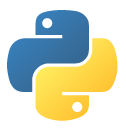I just read an article on Ars Technica, where they talk about a study put out by W3Techs on how PHP still dominates the live Web. Today in 2021, PHP is used on about 80% of websites. ASP.net is a distant second with about 9%. … PHP is still king of the Web! Interestingly, it…
Specifically, why is Java (and .NET) used by larger companies and PHP tends to be used by small medium sized business? Are there technical limitation in PHP 7 that prevent it from being used in big companies? Does Java and .NET share capabilities that PHP lacks? Or, is there something else going on? Check out…
Without a degree, your best chances of getting work is with a small business. Over 80% of small businesses use PHP to power their websites. So that makes PHP the #1 choice for those with no degrees.
WordPress is also widely used by small business, and WordPress is created with PHP, some JavaScript, HTML5 and CSS3. Together, these coding languages are part of what is called the ‘web stack’. Learn the web stack and you will open up MANY job opportunities.
Here is the video:
Mobile app development has moved toward hybrid apps, using the web stack (HTML5, CSS3 and JavaScript,) and frameworks like Phonegap or React Native.
But when it comes to the development of high demand (in terms of performance) mobile apps, using native languages like Swift for iOS and Java for Android is still the way to go. This might change with Googles Flutter framework.
Check out the video:
Thanks!
Stef
Which programming language is fastest? Which language will win the software development race? The participants include: C++ C# Java PHP Python JavaScript Ruby … and a late entrant, server side Swift. When measuring a programming language’s speed, you have to consider three things: write time, deployment and run-time. Learn PHP web development fast: https://shop.killervideostore.com/ Learn…
One question I get often, is which programming language should you learn? … I’ve been getting this question for years! Things change in the programming world, languages come and go. But the good news is that the basics, the core concepts and techniques, are 90-95% the same in all the modern programming languages: JavaScript Python…
PHP is probably the best web app development language out there today for a bunch of reason technical, and market oriented. But it’s not the only language out there and it doesn’t have a monopoly of good programming. Comparing Programming Languages An important lessons that my 20+ years of programming experience has taught me, is…

I am excited to announce our upcoming Python course: Powerful Python 3.
AÂ beginners course covering Python 3, students go from an absolute neophyte, to having a working knowledge of object oriented Python. Â Course is based on Python 3.6.
After nearly 7 years of working with schools, it seems clear to me that the best way to teach code, is with an open ended lesson plan. Here’s why: Learners will learn at different speeds Different schools have different schedules Rigid lesson plans will inventively break Overly rigid lesson plans can easily be derailed ……
One of the reasons PHP is a good language to teach server side programming with, is because it is relatively easy to setup a PHP environment on each student’s workstation. With free apps like MAMP and WAMP, you can install a fully functional PHP installation with MySQL, Apache and it comes with an easy to…